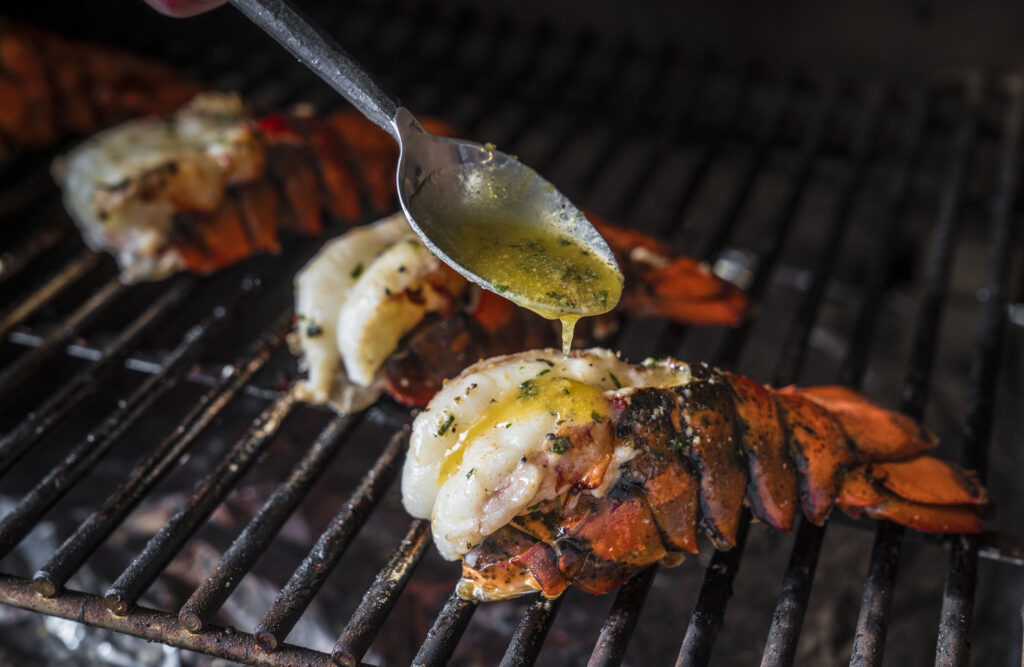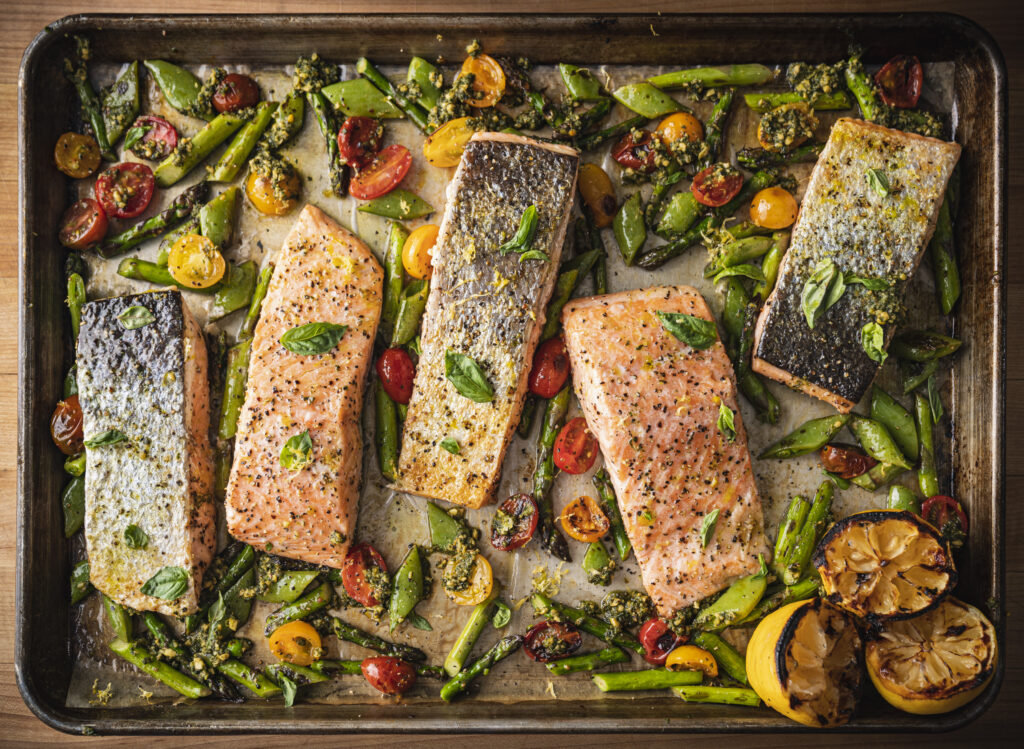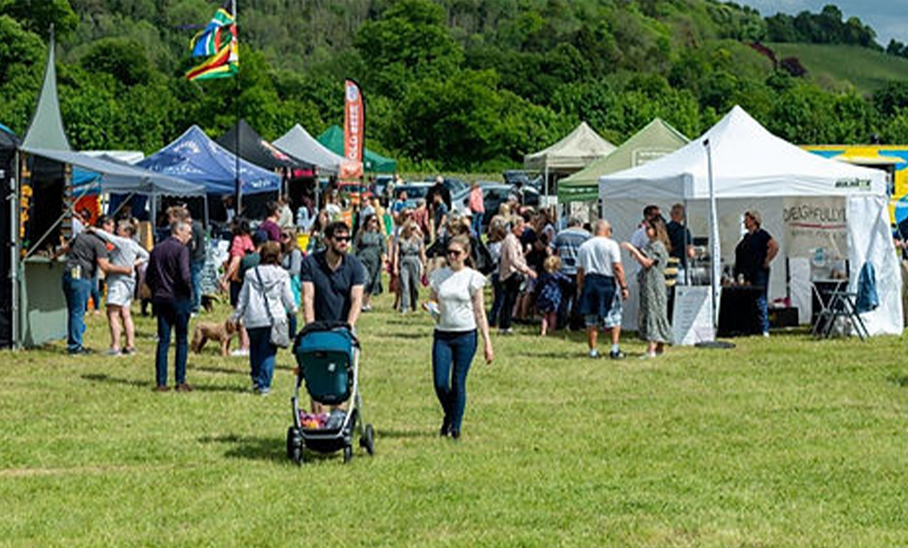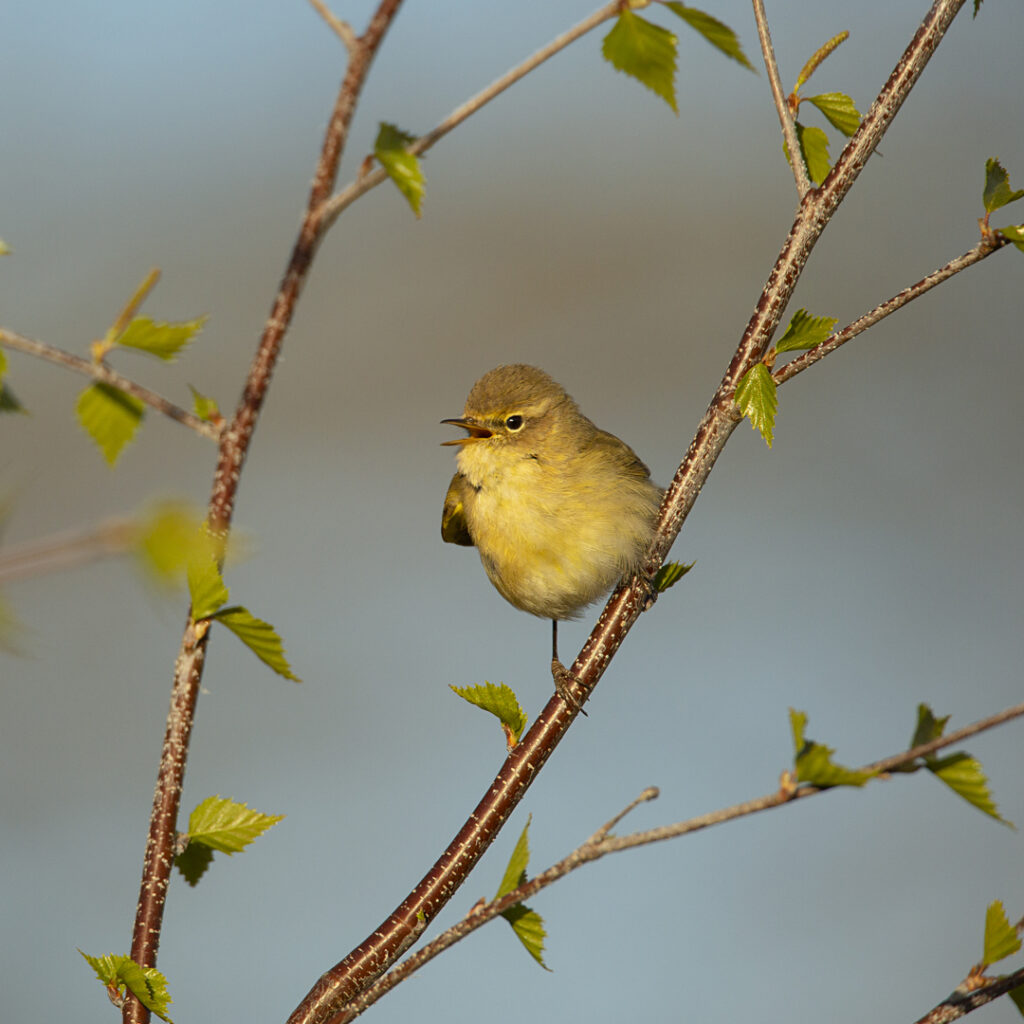Cycling is environmentally friendly, good exercise, offers the chance to enjoy the countryside and doesn’t have to be expensive – so what are you waiting for – get on your bike and pedal!
From penny farthings to electric bikes, cycling has always been a popular pastime – good for you and good for the environment – so there can be no better time to get out on your bike than during Bike Week this month.
June 5th to 11th marks the 100th annual Bike Week celebrating a century of everyday cycling for everyone. The health and green benefits are well known. This year to further peddle those, Bike Week 100 is all about workplace cycling – whether that’s organising an event or simply cycling rather than driving to work.
Guildford based Cycling UK, the organisation behind Bike Week, has set a series of challenges at Bike Week 100 Challenges | Cycling UK – burn 100 calories by bike, save £100 by bike and cover 100 miles by bike. The choice is yours, but of course having some stunning scenery in which to cycle is always a bonus, fortunately in our part of the world we are spoilt for choice!
Surrey & Hampshire
Oxfordshire
Berkshire
Wiltshire
Buckinghamshire

Surrey & Hampshire
Follow in the footsteps or tyre tracks of Olympic cyclists and take to Box Hill, the scenic route through the Surrey Hills is a mixture of A and B roads and country tracks.
Picturesque Chinthurst Hill in Guildford is perfect for family outings, hop aboard your bikes and drink in the beauty of the woodland complete with its quirky folly. Why not stop off on the way and make a day of it?
The Green Flag award-winning site of Frensham Ponds has a cycling spot which is perfect for shorter outings so provides the ideal family jaunt into the countryside. Nearby Farnham Park is another spot suitable for families to take to their bikes and enjoy a trip in nature.
In the same part of the world, Alice Holt Forest is a wonderful opportunity for natural cycling. Travel through ancient mighty oaks as well as wildflower rich open spaces during your cycle. Trails are open to enjoy with your own bikes or they can be hired here. The three-mile-long Family Cycling Trail starts with the opportunity to enjoy some fabulous freewheeling on the downhill section.
Take in a medieval castle on your route as you cycle the loop around Guildford Castle and Chantry Wood. The 6.8km trail is well kept and while popular still offers the chance for some peace and quiet.
Chobham Place Woods, Blackwater Park and Virginia Water lake should also go on your cycling ‘must do’ list. Here you’ll be able to spot ancient monuments and a stunning ornamental cascade waterfall as well as a 100 foot totem pole, with 10 mystical totem characters.
Neighbouring Hampshire invites you to try Abbotstone Down, Alresford where the route will take you through rolling chalk hills and bluebell woods or how about making tracks through Chawton Park Wood to Bentworth village on the 10-mile trail easily accessible from Alton or Four Marks. Enjoy more of a challenge from Alice Holt Forest along bridleways and roads through Bordon to Oakhanger and for hardened cyclists there’s one of the hardest trails in the county to the north of Petersfield where you can embark on some challenging climbs through rewarding scenery – not for the faint-hearted.

Serious cyclists may want to put their foot on the pedal and take on the challenge of the Surrey Tour on September 30th at Cranleigh Showground. The short route (!) is a mere 88km with longer options of 120 and 160 on the table too. Whichever you choose you’ll cycle through amazing countryside and in addition to a medal at the end there’ll be a much-needed beer and how about a slice of well-deserved pizza to refuel afterwards.
Bikes, like anything else you treasure, require some TLC from time to time and that’s where organisations such as Bike Project Surrey come in. The charity which has a workshop at Guildford College and a second at Brooklands College will teach you how to look after and service your bike and gain skills necessary for its maintenance. Paid and volunteer mechanics will help you make the most of your bike to prolong its life and help protect the environment. They will service, fix and customise your bike using recycled or new parts where necessary to help keep it on the road or track.
One of the things that makes Bike Project Surrey so great is that not only will they help get your bike shipshape they are also giving opportunities to those who may have missed out on learning in the past. Many students go to them for work experience, as can NEETs who will have the chance to gain a recognised qualification.
If you’re after a new bike, they have refurbished ones for sale and if you’ve an unwanted one or one children have outgrown then why not donate it? To find out more about their work and how you can get involved visit bikeprojectsurrey.org/wp/
Cycling is not just about two wheels, Wheels for All offers all ability cycling through its fleet of adapted bikes, trikes, quads, recumbents and side by side helping to make cycling an all-inclusive activity. It embraces disabled people and those who may not otherwise be able to enjoy the fun and freedom of cycling. Wheels for All Woking sessions are based at the athletics track at Woking Sportsbox. To find out more and to get in touch go to wheelsforall.org.uk/locations/woking-wheels-for-all

Oxfordshire
Enjoy some of the finest history Oxfordshire has to offer on a ride from the city of Oxford to Blenheim Palace. The family friendly ride follows the National Cycle Route 5 through residential neighbourhoods as it heads out towards Woodstock on its journey of around eight miles.
If mountain biking is your thing then at just under seven kilometres, the trail at Bagley Wood near Abingdon is ideal for beginners and the family, taking around two hours.
Mystery lovers should hop on their bikes and follow the Agatha Christie cycling route which takes in Wallingford, Goring and Streatley and Cholsey on the 17 mile loop. Once you’ve developed a taste for cycling in this area how about trying a ride through Goring Gap along quiet lanes and with stunning views.
Fancy seeing some art on your bike ride from Upton to Didcot? In addition to some lovely countryside there are interesting art benches (perfect for a breather) along the three to four mile route. Join the art trail from Upton and follow the signs for Didcot down towards the train station and into town for a refreshment stop.
Serious cyclists may like to take part in Bike Oxford on June 25th, choose from three routes of 75, 50 and 26 miles all winding through the best scenery Oxford has to offer. This popular event raises funds for Maggie’s Oxford Cancer Care centre. To take part visit bikeoxford.co.uk
Bikes, like anything else you treasure, require some TLC from time to time and that’s where organisations such as Broken Spoke Bike Co-op in Oxford and Windrush Bike Project in West Oxfordshire come in.
The Broken Spoke is run by people who are passionate about cycling and aim to make people more proficient in cycle maintenance and riding. They offer a range of DIY workshops, mechanics courses, cycle training, Beryl’s night – a free monthly evening session for women and all trans and non-binary people – as well as repairs and sales. It depends on its volunteers and more help is always needed, to find out more and offer your services visit bsbcoop.org
In West Oxfordshire, the staff and volunteers at the Windrush Bike Project help people to make journeys by bike and learn about the mechanics of bikes. A community workshop teaches vulnerable children and adults to fix donated bikes through courses. They also deliver Bikeability cycle training in schools across the area, campaign for safe cycling routes and provide information about riding in and around West Oxfordshire.
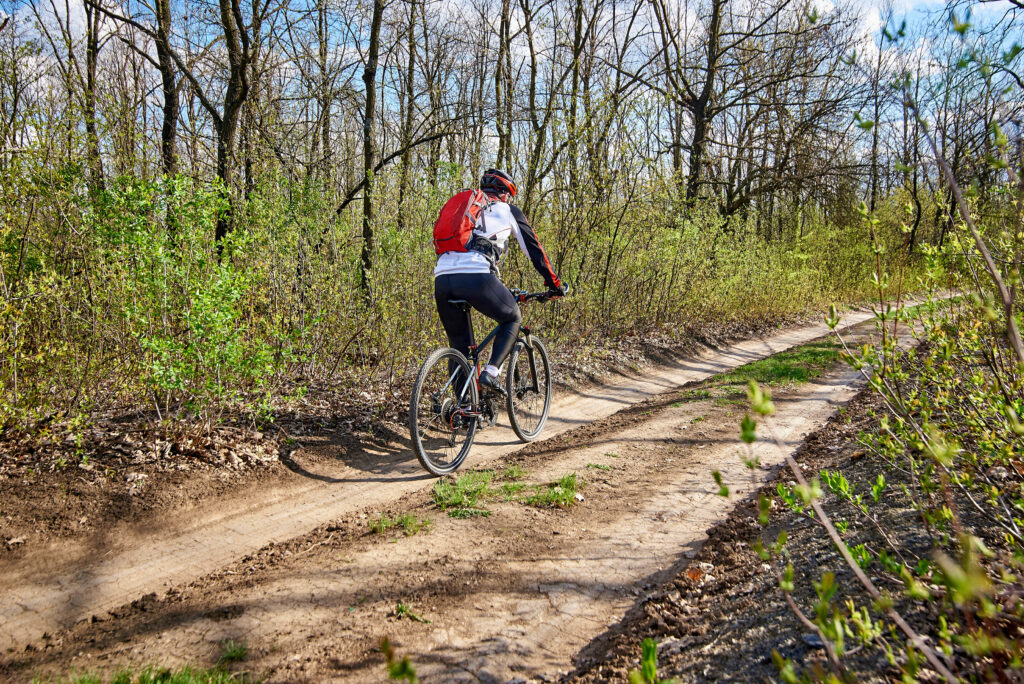
Berkshire
The Kennet & Avon Canal is great for more adventurous family biking expeditions and all the locks en route provide the perfect start / stop points and with the trainline running alongside too you can do some great A-B bike rides starting at a railway station and returning by train if it all becomes too much or the Great British weather intervenes! Take in the picturesque canal through Newbury, Thatcham, Hungerford and Pewsey.
The Nature Discovery Centre, near Thatcham has a lovely bike ride loop around the lake, perfect for kids and with a café and two playgrounds it’s a fabulous day out.
Don’t be surprised if you suddenly encounter ponies grazing as you ride through Snelsmore Common. They’re a familiar sight around the routes to Donnington Castle if you venture far enough.
The Ridgeway is a journey through time taking in part of our heritage, experience wide open views and explore ancient treasures such as Neolithic long barrows and Bronze Age round barrows. At more than 80 miles long the Ridgeway is a route that will test your fitness levels. Mountain bikers can complete the stretch from Avebury to Goring in around two days.
For off-road cycling and 24km of trails suitable for all abilities, visit Swinley Forest which offers a choice of three trails – green, blue and red. Green is the perfect introduction to off road cycling, ideal for families and beginners. The blue trail offers a flowing loop suitable for intermediate and mountain bikers while the red advanced trail has challenges those with off-road skills will appreciate.
Dinton Pastures, near Wokingham is one of the most attractive spots locally and offers several different tracks around the lakes including the 1.8 mile Black Swan Lake loop where you can spot interesting ducks and swans along the way. The path is flat so ideal for kids but does have some bumpy sections where the path has been resurfaced with rough gravel.
Black Park Country Park has “family” written all over it with options for kids of all ages. In addition to the circular path around the lake, there’s a great route with an adventure play park halfway. It’s just under a mile so ideal for little legs. Bigger kids looking to exert themselves can take on the 10 miles of cycling and walking tracks around. Take your own bikes or hire them from Go Ape next to the car park.
The Thames Path stretch from Goring to Pangbourne is public bridleway so saddle up and ride. Enjoy some glorious country back lanes to Tilehurst Station (via Mapledurham) – it’s around nine miles and from there a train can zip you and your bikes back to Goring in about eight minutes.
Bikes, like anything else you treasure, require some TLC from time to time and that’s where organisations such as Reading Bike Kitchen come in. Got a bike that’s been sitting in the garage with spokes covered in cobwebs or just need some advice and access to tools to get your beloved bike shipshape again? This is the place for you. Take your trusty steed along and either make use of the space and tools at the Small Business Centre in Weldale Street or just ask one of the volunteers who will be more than happy to help and get you back in the saddle. Reading Bike Kitchen also welcomes donations of bikes in reasonable condition to pass on to a new owner. Visit readingbicyclekitchen.org to find out more.
Windsor Cycle Hub is a community initiative organisation set up to promote cycling for all in the community which as well as encouraging residents and visitors to get on their bikes, recycles affordable bikes, teaches mechanical skills, sharing knowledge and resources and running events and rides. Operating from The Swan in Clewer, the bike kitchen will carry out safety checks, maintenance, repairs and offer advice. Most weekends there’s a ride you can join in with too – operating on four different levels they’re a wonderful way to enjoy cycling in the company of others. Find all dates, advice and more at windsorcyclehub.org

Wiltshire
Wiltshire has some gorgeous scenery to navigate and explore so how about going slightly further afield and starting in Salisbury – worth it for the cathedral alone. Cycle via an old drover’s road up to remote Normanton Down where Stonehenge will be on the horizon. Cyclists in the know prefer the village of Avebury, whose ancient stone circle is more accessible and more fun to visit. The circular 160-mile Wiltshire Cycleway showcases the county, right up to historic Malmesbury in the Cotswolds.
Experienced cyclists will want to tackle William’s Big Wheel on Saturday, 10th June. Run by West Berkshire Spokes, it starts from West Mills, Newbury RG14 5BQ and takes you through Marlborough, Ramsbury and Lambourn. This is a limited numbers ride but if seeing them whizz past whets your appetite for ‘serious’ cycling then the group runs two rides a month, find out more at www.westberkshirespokes.org
You might still be in time to sign up for the Hydra Ride on June 25th. The sportive-style road cycle ride, starts from Wood Street, in the heart of Swindon Old Town, a choice of three routes all go south-east along rolling roads winding through stunning countryside taking in Lambourn, Ramsbury and Aldbourne on the way. The Hydra 5, 7, and 9 offer a challenge for riders of all abilities with rewarding climbs and swift descents. And if the cycling’s not for you make sure you look out for them pedalling through the towns and villages. Full routes at thehydraride.co.uk

Buckinghamshire
Follow the Phoenix Trail from Princes Risborough to Thame and enjoy the perfect family trail. Not only is it flat and safe, but there’s no traffic to contend with along the 7.5 mile path which largely follows the path of a disused railway line, dotted with 30 sculptures acknowledging railway history and the Chiltern countryside.
Wendover’s Juniper Cycle Trail takes you along six miles of well-surfaced trails with climbs and descents. Suitable for intermediate riders and mountain bikers with basic off-road skills, some parts are steep but the trail is well-surfaced.
Take in the sights of Jubilee Weir and Windsor (including Eton) on an enjoyable 11.5 mile route from Windsor Bridge Loop to Taplow that includes five+ miles of fabulous cycleways.
Explore Little Marlow, Bourne End, Cookham Bridge, Cookham Dean and the Marlow Suspension Bridge on an easy circular route of just over 10 miles, finishing back in town for a well-earned refreshment reward.
Longer routes well worth a pedal in the area include taking in the Roald Dahl Museum and Story Centre and Butt’s Way with a cycling round trip which takes in Princes Risborough. You can cycle in the landscape of Pavis Wood and enjoy Chesham, Amersham and Great Missenden and how about exploring the Royal Standard of England taking in Beaconsfield en route? For full details of these and more rides, please visit routeyou.com/en-gb/location/routes/47411801/buckinghamshire?route-type=1
Organised by Wheelpower, the Tour de Vale Charity Bike Ride on Sunday, 11th June, is Buckinghamshire’s largest charity cycling event which starts and finishes at Stoke Mandeville Stadium with a chance to enjoy the beautiful countryside. Cyclists can enjoy full support en route while the finish yields a massage, barbecue and bar to recover and relax. This fabulous event raises funds for the Stoke Mandeville charity which provides opportunities for disabled people to lead healthy, active lives. Full details and to enter, visit wheelpower.org.uk/tourdevale23











